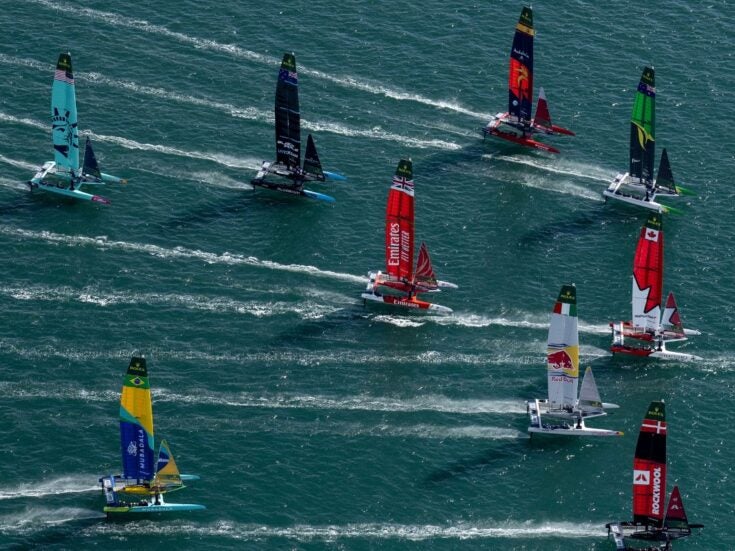
You’ve bought the yacht – now what? Life on the high seas (or even in the crowded marinas of Nice) is fraught with problems, says Selwyn Parker
IN THE NOVEL A Man in Full by Tom Wolf, the superyachts moored down by the marina at Atlanta bear boastful names like First Draw. This doesn’t mean, as you might expect, that the owner is a crack shot with a six-shooter. Rather, it’s a joke at the expense of the banks. The first draw-down of debt intended for a construction or some other project has gone into the borrower’s boat instead.
The banks often got the last laugh though. When the project failed, the yacht became one of the first assets the banks seized along with the corporate jet.
Superyacht owners seem to be divided into two groups: one group genuinely loves to go afloat and can afford the expense of a luxurious life on the ocean wave while the other group genuinely loves the idea of owning a superyacht, the ocean wave be damned. The latter category often finds that proprietorship of a luxurious greyhound of the sea, as most of them are, is far from an unalloyed joy.
Take the crew. Like in Upstairs, Downstairs, it really is hard to find good staff these days, especially of the sea-going variety. “It’s the most tricky part of owning a superyacht,” explains Kinsale, Ireland-based Ron Holland, who was himself a professional skipper before becoming a pre-eminent designer of superyachts. “The crew has to be compatible with the owner. The last thing you want is a crew who treats the owner as a nuisance.”
Incredibly, that’s what some skippers do, regarding the occasional coming-aboard of their employer and friends as a regrettable interference in the fun they’re having with a yacht that some come to regard almost as their own.
The superyacht labour market also favours sellers. Because it can easily require the services of eight professional crew to attend the owner and, say, ten guests, there’s a shortage of qualified and agreeable manpower. That is people who can cook, serve and clean to the required standard, manage and maintain a very big boat on the high seas and in port, and behave pleasantly at all times.
For Darcy Narraway, owner of Vancouver-based Yacht Register which finds such gems, compatibility is the key, competency being assumed. “Most owners prefer particular nationalities. When travelling the globe on a yacht it’s nice to have someone from your own country with whom the owner can talk about home,” he explains. “[Familiarity] with certain sayings, expressions and references make communication easier when living and working with crew.”
His modus operandi is to check out applicants through the social media like Facebook and Twitter “to establish their personal preferences and the people they hang out with” as well as taking careful note of their extra-curricular activities.
For some, disenchantment is rapid and many superyachts go back on the market within a year or two of delivery, not so much because they cost a king’s ransom to run (although they do) but because the owner just doesn’t get value out of the investment. The odd thing about superyacht owners is that, although most of them have become wealthy by working every pound, euro, dollar or rouble to death, they throw it all overboard – literally, you might say – on their pride and joys. Few of them will spend more than 20 days a year on board.
As one yacht broker points out, “this equates to a usage of just six per cent of the cost.”
And it’s why fractional ownership is becoming popular whereby a decent number of cruising “credits” can be acquired for around £45,000 a year.
It’s also why marinas are full of beautiful boats going nowhere and collecting weeds. That’s if the owner can find a marina.

Roman Abramovich’s Pelorus
The available space has not kept pace with the rapid increase in the global mega-fleet and there’s a shortage of the right kind of berths in several parts of the world. That is, moorings in safe havens within strolling distance of cafes, boutiques and beaches. (As any professional skipper will tell you, most superyacht guests prefer shopping to salt air and the first thing they do when hitting terra firma is book into the nearest hotel.)
By general agreement, the dearth of berths is most severe on the Med. “At the height of the summer you can’t even bribe your way into a marina on the south of France,” says yacht designer Ron Holland, only half-joking. Indeed inducements are quite common. “In the Med you often have to pay the dock master under the table to get a space,” says one insider.
And some superyachts are so super they can’t get a space on a marina at any price. Oracle’s Larry Ellison has complained that his Rising Sun, a 450-footer [138m], either has to drop anchor and take passengers ashore in a tender or tie up at a commercial wharf among the fishing fleet, which half-spoils the pleasure.
Although the industry is trying to catch up by building mega-marinas in the Middle East – Dubai and Doha in particular, it will be some time before there’s space for the 560-foot Eclipse, latest mini-cruise ship to join the navy of oligarch Roman Abramovich. Indeed he’s complained at the absence of the right kind of shore-going facilities for his fleet, although he keeps commissioning additions to it.
A few owners are genuinely surprised, even shocked, by the expense of running superyachts. Annual maintenance and running costs can be roughly estimated at 10 per cent of the vessels’ capital cost, which is anything between £960,000 – £1.9m a year, depending on its size. Berthing fees alone can easily average £1,200 a month, depending on the location.
The services of a professional skipper – actually, a captain because the bigger yachts are technically classified as merchant ships – can cost as much as a mid-sized company’s chief executive. (The owner may not be allowed to take the helm because few have the necessary papers.) And diesel fill for an ocean crossing can easily run to £64,000.
In short, with pleasure boats of this size, nothing’s changed that much since banker J.P. Morgan Jnr told a friend who was thinking of buying a yacht similar to his own: “If you have to ask the price you can’t afford it.”
Yet despite their drawbacks, the demand for superyachts continues only slightly abated. The financial crisis slowed orders but not by much. Just before the Tullett Prebon London boat show in January, a report by yacht broker YachtWorld.com showed that values are more than holding up in the five-star category. “Luxury boat buyers still continued to influx the market in 2010, keeping demand high and larger boat prices at a premium,” it said.
And when you get aboard one of these magnificent things, you can see why. I was once lucky enough to take the wheel of a Ron Holland-designed sailboat for a blast up Auckland Harbour, New Zealand. In a gust the boat heels over, the massive sails crack and fill, and she accelerates like a thoroughbred, water boiling past the gunwales, rigging thrumming under frighteningly high loads.
But to justify the price of the thrill, you’ve really got to belong to the first category of superyacht owner.
|
What exactly is a superyacht? As for the sailboats, the categories extend from 30m up to 45m plus, or nearly half the length of a rugby field. Today’s elegant monsters are much bigger than the pre-war America’s Cup yachts such as Shamrock V. They were “pulley-hauley” boats – everything went up and down by muscle power – whereas it would be impossible to get the sails up of even a modest superyacht without hydraulics. |







